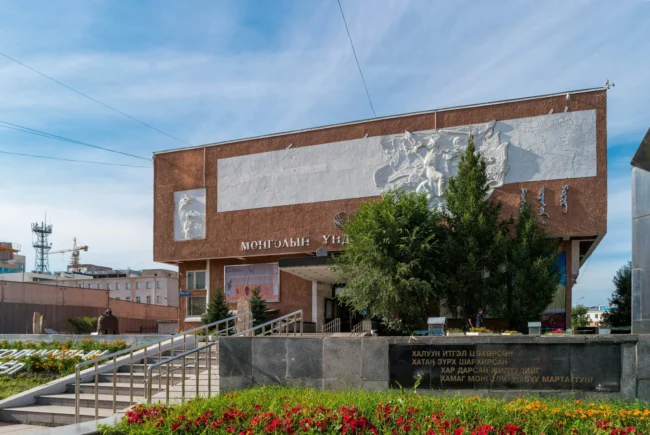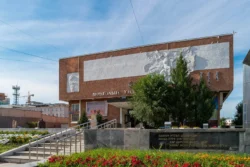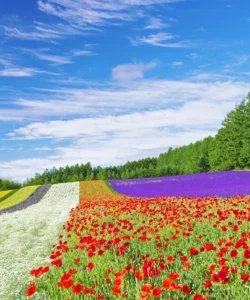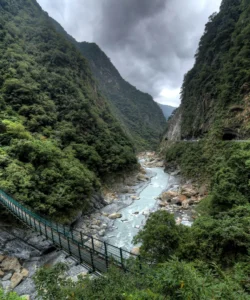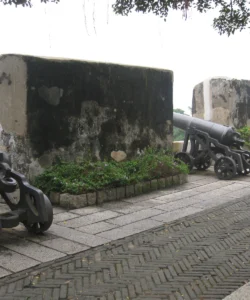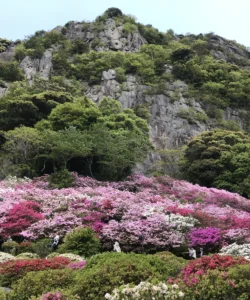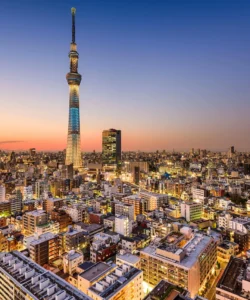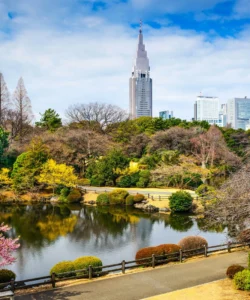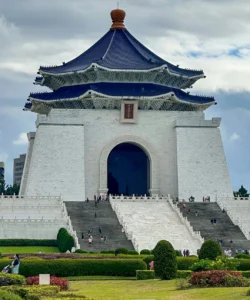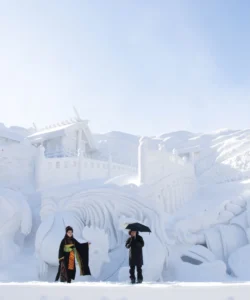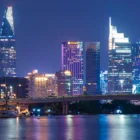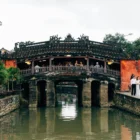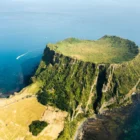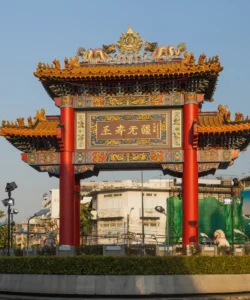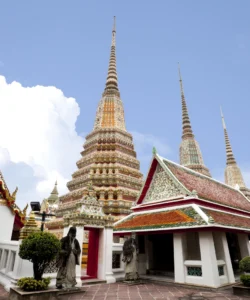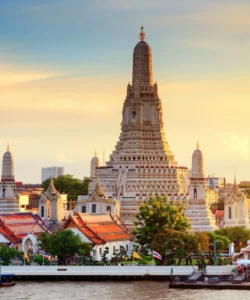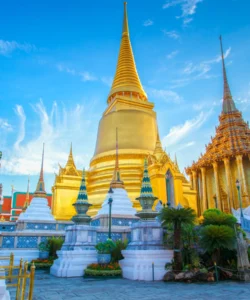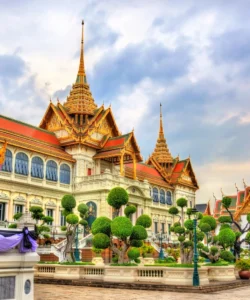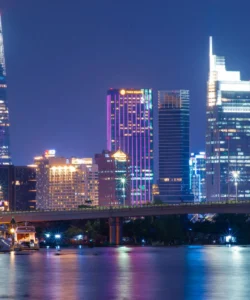The National Museum of Mongolia is the premier institution for understanding the vast and rich history, culture, and ethnography of Mongolia. Located in the capital, Ulaanbaatar, it offers a chronological journey from the Stone Age to the present day, making it an essential visit for anyone seeking a comprehensive overview of the nation’s heritage.
Name: National Museum of Mongolia (Монголын Үндэсний музей, Mongolyn Ündesnii Muzey)
Address: Juulchny Gudamj – 1, 14201 Ulaanbaatar, Mongolia. It is centrally located in Ulaanbaatar, just west of the main Sukhbaatar Square.
How to get there:
Being in the heart of Ulaanbaatar, the National Museum of Mongolia is very accessible:
- On Foot: If you are staying in the central areas of Ulaanbaatar, especially around Sukhbaatar Square, it’s a short and easy walk to the museum.
- By Taxi: Taxis are readily available throughout the city and can drop you off directly at the museum. It’s always a good idea to agree on a fare beforehand or ensure the meter is used.
- By Public Bus: Numerous public bus routes pass by or near the museum. Consult local bus maps or ask for directions from your accommodation.
Landscape and Architecture:
The current building of the National Museum of Mongolia was constructed in 1971, originally as the Museum of Revolution. While it’s a modern, purpose-built structure for a museum, its architecture is relatively utilitarian for the socialist era, characterized by:
- Soviet-era Functionalism: The building’s exterior is somewhat plain, reflecting the functional and often brutalist architectural trends of the Soviet period, with a focus on practicality rather than ornate aesthetics.
- Integration of Traditional Motifs (Subtle): While not overtly traditional, the design might subtly incorporate elements that resonate with Mongolian motifs in its overall massing or window arrangements. Some sources describe its architecture as integrating “traditional Mongolian motifs with contemporary design elements.”
- Interior Layout: The interior is designed to facilitate a chronological flow through various exhibition halls. The museum features nine main halls arranged according to historical periods and themes, making for an intuitive visitor experience.
- Exhibition Focus: The primary “architecture” of note here is the internal design of its exhibitions, which are meticulously curated to tell the story of Mongolia’s past.
What makes it famous:
The National Museum of Mongolia is famous for:
- Comprehensive Historical Overview: It provides the most complete and chronological overview of Mongolian history and culture, from the Stone Age (around 800,000 BCE) through the Bronze and Iron Ages, the rise of ancient nomadic states (like the Xiongnu and Turkic empires), the glorious Mongol Empire of Chinggis Khan, the period under Manchu rule, the socialist era, and finally, the democratic revolution and modern Mongolia.
- Diverse Collections: The museum houses a vast collection of artifacts (around 56,000 objects), including:
- Archaeological finds: Stone tools, Bronze Age artifacts, and items from ancient nomadic states.
- Ethnographic displays: Extensive exhibits on traditional Mongolian nomadic life, including fully furnished gers (yurts), traditional tools, musical instruments, games, and ceremonial objects.
- Traditional Costumes and Jewelry: A highlight for many visitors is the impressive display of costumes and elaborate headwear from Mongolia’s various ethnic groups, showcasing their unique sartorial traditions.
- Mongol Empire Artifacts: Weapons, armor, state banners, and artifacts excavated from sites like Karakorum.
- Socialist and Democratic Eras: Photos and objects documenting Mongolia’s 20th-century political and social transformations.
- Educational Role: It serves as a vital cultural, scientific, and educational institution, not only for the public but also by providing methodological training and guidance to other government-owned museums in Mongolia.
- Accessible English Information: Most displays have good English signage, making the vast amount of information accessible to international visitors.
Differences from some other wonders:
The National Museum of Mongolia, while similar in function to national museums elsewhere, has distinct characteristics:
- Unified National Narrative: Unlike many countries with highly specialized museums (e.g., separate archaeological, ethnographic, or history museums), the National Museum of Mongolia offers a single, comprehensive narrative of the nation’s entire history and culture under one roof. This makes it uniquely efficient for visitors to grasp the broad sweep of Mongolian development.
- Focus on Nomadic Heritage: Given Mongolia’s unique history as a land of nomads, the museum places a strong emphasis on nomadic pastoralism and the material culture associated with it, from traditional gers and livestock tools to the clothing of various ethnic groups. This focus is less prominent in national museums of countries with predominantly settled agricultural or urban histories.
- Contrast with New Chinggis Khaan Museum: It’s important to note the recent opening of the Chinggis Khaan National Museum (opened 2022) in Ulaanbaatar, which specifically focuses on the history of Mongolian statehood from the Xiongnu Empire to the early 20th century, with a strong emphasis on Chinggis Khan and his descendants. While there’s some overlap, the National Museum of Mongolia still retains its broader historical and ethnographic scope across all periods. The new Chinggis Khaan Museum is a purpose-built, highly modern facility with interactive displays, whereas the National Museum of Mongolia is a more traditional, established museum.
- Post-Socialist Perspective: The museum’s exhibits covering the socialist era and the transition to democracy offer a unique perspective on a period of intense transformation that many other nations’ national museums might not cover in such depth, especially from a former Soviet-bloc country’s viewpoint.
- Historical Evolution: The museum itself has a rich history, having evolved from the first Mongolian museum in 1924 and undergoing several name and mandate changes before becoming the National Museum of Mongolia in 2008. This evolution reflects the nation’s own changing historical priorities.
In essence, the National Museum of Mongolia is a crucial gateway to understanding the soul of Mongolia, from its deep prehistoric roots to its modern identity, all presented through a rich tapestry of artifacts and cultural displays that highlight its unique nomadic legacy.
